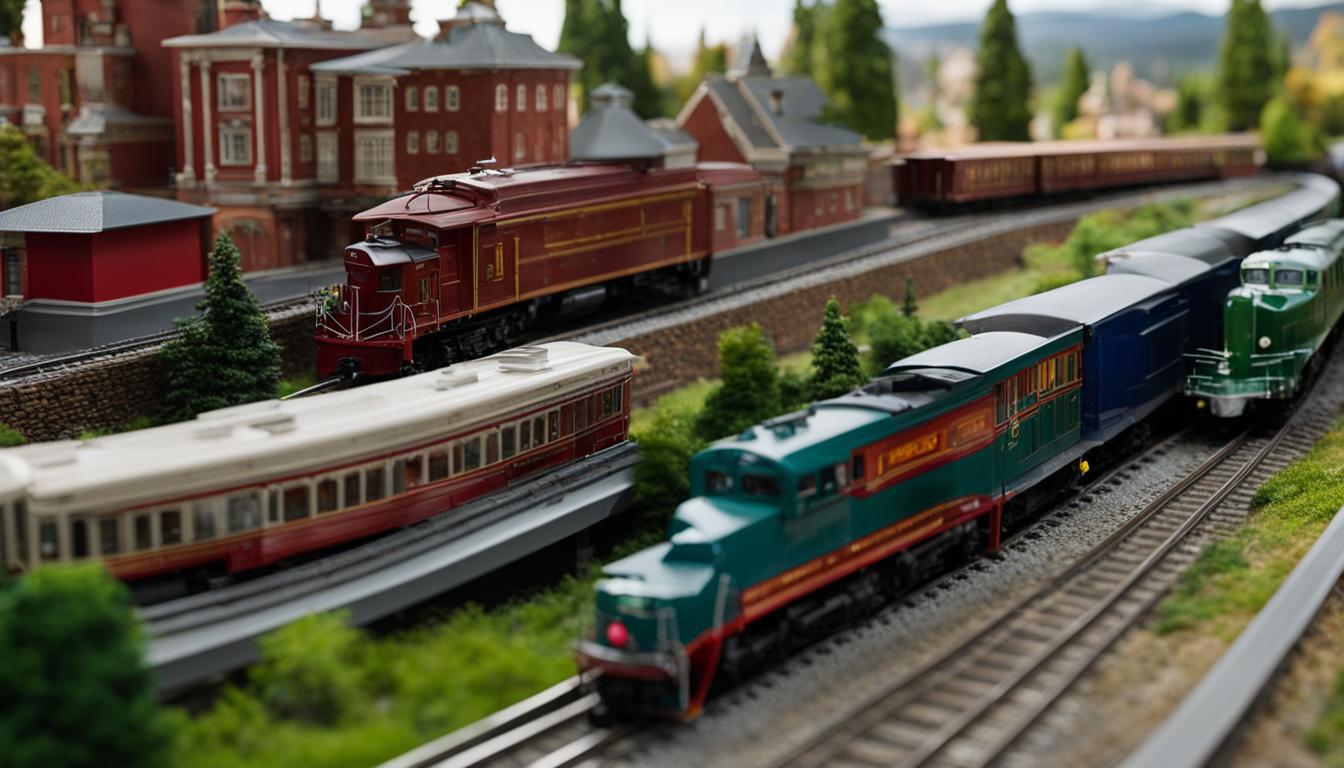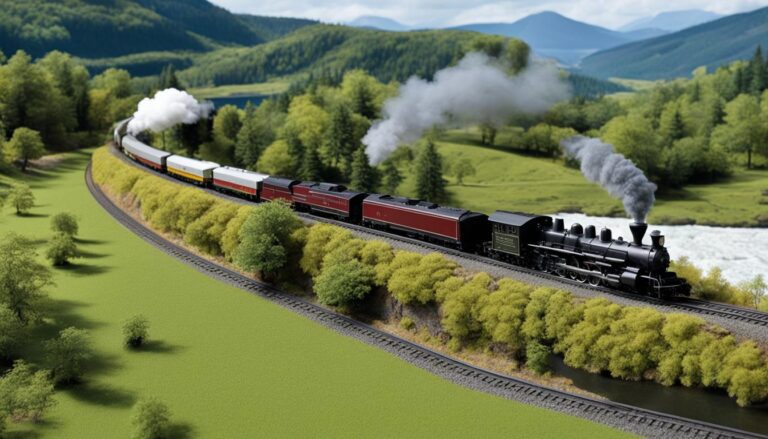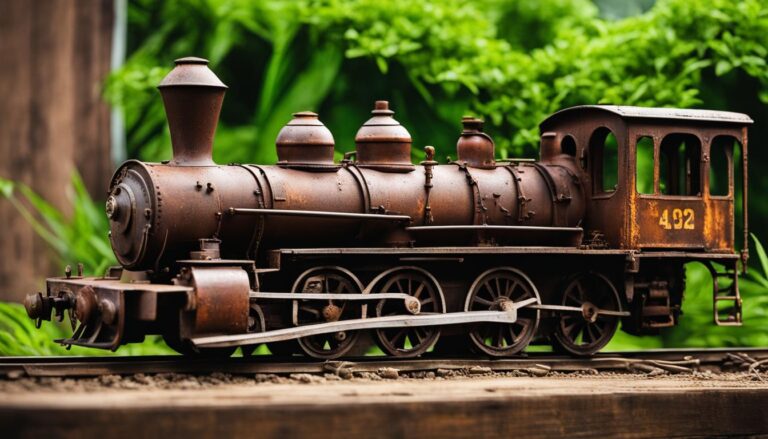Model Train DC vs DCC Systems: Picking the Best Track Option
When it comes to model trains, the choice between DC and DCC systems can be a tough one. Each system offers its own advantages and it’s important to understand the differences before making a decision. In this article, we will explore the key factors to consider when choosing between model train DC and DCC, so you can make an informed choice that suits your needs.
Key Takeaways:
- Understanding the differences between model train DC and DCC systems is crucial when making a decision.
- DC systems operate on direct current and are known for their simplicity and lower cost.
- DCC systems offer more advanced features and allow for independent control of each train.
- Consider factors such as layout size, number of trains, and desired operating experience when choosing between DC and DCC systems.
- Ultimately, the decision comes down to personal preference and the specific needs of your model railroad.
Understanding DC Model Trains
Another name for DC is direct current. DC model trains run on this type of electricity. Power is sent to the track in this method, and all the trains on the track get the same amount of power. DC systems are popular among model train fans because they are easy to use and don’t cost as much.
Another word for DC is direct current. This electricity powers DC trains. This system sends power to the track, giving all trains the same power. DC systems are cheap and easy to use, therefore model train fans like them.
One of the key advantages of DC model trains is their simple wiring. With a DC system, you only need to connect the power supply to the track, and all trains running on that track will receive power. This makes it easier for beginners to get started and reduces the complexity of the layout.
Another benefit of DC model trains is their affordability. DC systems typically require less expensive equipment and components compared to their digital counterpart, DCC (Digital Command Control). This makes DC a budget-friendly option for model railroaders who are just starting out or have cost constraints.
Benefits of DC Model Trains:
- Simple wiring
- Low cost
- Great for beginners
Overall, DC model trains offer a straightforward and cost-effective way to enjoy the hobby of model railroading. While they may not offer the advanced features and flexibility of DCC systems, DC trains are a great option for those who prefer simplicity and affordability.
Exploring DCC Systems Model Trains
DCC model trains run on a digital command control system, offering advanced features compared to DC systems. With DCC systems, each individual train on the track can be controlled independently, allowing for precise speed and direction control. This level of control is not possible with DC systems, where all trains on the track receive the same power and operate at the same speed.
One big benefit of DCC is that it lets you handle more than one train at the same time on the same track. This is especially helpful for model railroaders who want to make realistic scenes where more than one train is running at the same time. DCC systems do more than just run trains. They also add sound and lighting effects that make the model railroad experience more realistic.
DCC Systems Layout
DCC systems require more complicated wiring than DC systems. Each train on the track needs its own control and power source. Setting up a DCC systems layout may take longer. DCC systems are more expensive than DC systems, making them a better choice for dedicated model railroaders searching for a more advanced control system.
To summarize, DCC systems model trains offer greater control, the ability to operate multiple trains simultaneously, and the integration of sound and lighting effects. However, they do require more complex wiring and are generally more expensive than DC systems. When considering whether to choose DCC or DC for your model railroad, it’s important to weigh the benefits and drawbacks of each system and consider your specific needs and preferences.


| Aspect | DC Model Trains | DCC Systems Model Trains |
|---|---|---|
| Control | All trains receive the same power and operate at the same speed | Individual control of each train, allowing for precise speed and direction control |
| Number of Trains | One train at a time | Possibility to run multiple trains simultaneously |
| Wiring Complexity | Simple wiring | More complex wiring to accommodate individual train control |
| Cost | Generally lower cost | Generally higher cost |
| Additional Features | No sound or lighting effects | Possibility to integrate sound and lighting effects |
Factors to Consider When Choosing Between DC and DCC Systems
There are a few important things to think about when choosing between DC and DCC systems for your model train layout. Some of these are the number of trains you want to run at the same time, the size and complexity of your plan, and the sounds and other effects you want. To help you make a smart choice, let’s take a better look at each of these factors.
Layout Size and Complexity
Your layout’s size and intricacy decide if DC or DCC is the fit. A smaller layout, few tracks, one train – DC is apt. Simplicity and lower cost make DC ideal for beginners or smaller layouts.
On the other hand, if you have a larger layout with multiple track sections and want to run more than one train simultaneously, DCC systems may be the better option. DCC systems allow for independent control of each train, enabling you to control the speed, direction, and other functions of each locomotive individually. This creates a more realistic and immersive operating experience, especially for model railroaders who enjoy running multiple trains at once.
Sound and Other Effects
If music and other effects are important to you when you run your model trains, DCC is a big plus. With DCC, you can give your trains sound modules, lighting effects, and other extras that will make them come to life and make your set look more real. DC systems, on the other hand, don’t have as many sound and effect options, so people who value these features less might not like them as much.
Conversion and Upgrading
Another factor to consider is the possibility of converting an existing DC layout to DCC or upgrading a DCC system. If you already have a DC layout and want to switch to DCC, you’ll need to consider the cost and effort involved in rewiring your layout and installing a new DCC system. Similarly, if you have a DCC system but want to upgrade to a more advanced system or add more features, you should carefully assess the compatibility and cost of the upgrade.
Hornby and others offer both DC and DCC systems, letting railroaders switch as needs and tastes change.
Table: Comparing DC and DCC Model Train Systems
| Factors | DC | DCC |
|---|---|---|
| Layout Size and Complexity | Smaller layouts with one train at a time | Larger layouts with multiple trains simultaneously |
| Sound and Other Effects | Limited sound and effect capabilities | Advanced sound and effect capabilities |
| Conversion and Upgrading | Possible but requires rewiring and installation | Possible but may require compatibility assessment and cost considerations |
Conclusion
You can choose between DC and DCC systems for model trains based on your personal tastes and the needs of your model railroad. It’s important to think about these things before making a decision because each choice has pros and cons.
DC systems, powered by direct current, offer simplicity and a lower cost compared to DCC. They are ideal for beginners or those on a budget, as they require less complex wiring and are easier to set up. If you prefer operating one train at a time and have a simpler layout, DC may be the better option for you.
More control and advanced functions are available with DCC systems. Digital command control lets each train have its own speed, direction, sound, and lighting effects. DCC offers more versatility and realism, but it requires more complicated wiring and costs more. DCC may be superior for running many trains concurrently or a more immersive model train experience.
When making your choice, think about your budget, the size of the plan, and the kind of operation you want. There are good things about both DC and DCC methods, so pick the one that fits your likes and needs. No matter what method you pick, have fun modeling!
FAQ
What is the difference between DC and DCC model train systems?
DC model trains operate on direct current, where all trains on the track receive the same power. DCC model trains operate on a digital command control system, allowing for individual control of each train.
Which model train system is simpler and more cost-effective?
DC systems are known for their simplicity and lower cost compared to DCC. They require less complex wiring and are a good option for beginners or those on a budget.
What are the advantages of DCC model trains?
DCC systems offer more advanced features such as controlling trains at different speeds and directions, as well as adding sound and lighting effects. They provide greater flexibility and realism, but require more complex wiring and may be more expensive.
How do I decide between DC and DCC for my model railroad?
Consider factors such as the size of your layout, the number of trains you want to run, and your preference for sound and other effects. DC is a good choice for those who prefer to operate one train at a time and have a simpler layout, while DCC is ideal for running multiple trains simultaneously and having a more realistic operating experience.
What should I consider when making my choice between DC and DCC?
Consider your budget, layout size, and desired operating experience. DC offers simplicity and lower cost, while DCC provides greater control and more advanced features. Choose the system that best suits your needs and preferences.







